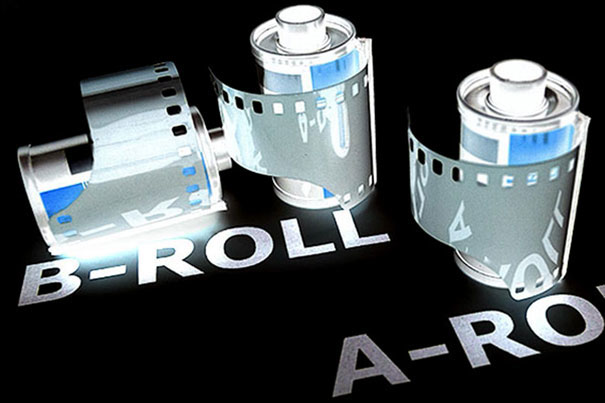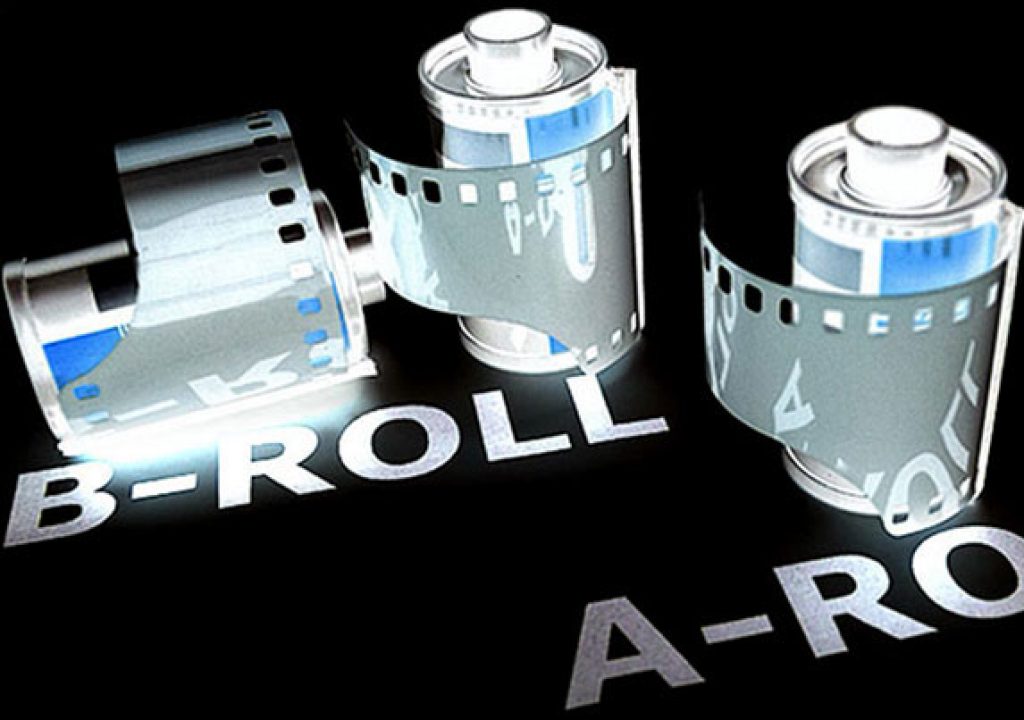
Some will argue that B-Roll is fundamentally a storytelling technique that helps to create continuity, and that the additional information is secondary, but in fact B-Roll can, as said previously, be different things to different people. So much so, that you can buy B-Roll shot by others to insert in your own video.
I also mentioned in the previous article, B-Roll explained to Photographers – Part I – that many companies tend to have what they call B-Roll of their premises and different activities related to what they do, that can be used to promote them. That B-Roll helps videographers to build their narratives, but sometimes may not have a direct connection to the storytelling, being more a way to insert information, which may be photos, charts or video, that, no doubt, enhances the story, but also provides extra information. So, to a certain extent, history and information go, from where I see it, hand in hand, in many situations.
Agencies that sell B-Roll
The need for B-Roll stock that can be used in different videos has led to the appearance of agencies that sell B-Roll stock, a growing tendency of the market and one area that some videographers may want to explore. Websites like iStockPhoto Video, Pond5 or B-Rollstock are both a place to search for B-Roll and a showing place for your B-Roll. And the list is growing, so do search for more options, as the number of agencies selling B-Roll suggests that this may represent an extra income source for some photographers and videographers. Not that you will get rich – or extremely rich – doing it, but it may well be a way to get paid for extra footage you may have taken but are not using.
B-roll is many times associated with interviews and a narrative around them, but what if you do not do interviews and mostly cover other subjects? Are you supposed to forget B-Roll? No, you simply adapt to the circumstances, something I mentioned in the first article. Browsing through some of the websites selling B-roll you’ll easily understand that the term spans over a wide range of themes. Some of it may just be a filler for something you’re editing, but it will be the right filler to make for a more interesting final video. If it wasn’t so, there would not be a market.
B-Roll is more than interviews
As said above, the term B-Roll is usually – and mainly – associated with interviews or documentaries in which a talking head (or interviewed) is the main element and fills the A-Roll. But the term can, in fact, be extended to multiple areas of video, because every story, be it your own little homemade video or a commercial shoot, needs to have elements that make for a concise presentation. That’s the reason why B-roll should not be underestimated, and looked upon as a filler, but as an enriching part of the whole experience. It can include, let me say this again, additional video footage, still photographs, almost anything. The only limit is your imagination!
I’ve chosen three videos I’ve created for different reasons to show how B-Roll – or extra information -can help to get a more complete story. Being a photographer at heart, moving and still images tend to mix in my productions, as I am mainly using video as a complement – could I call it B-Roll? – to some of my photographs. Let’s start with one that clearly shows how a photographer can use B-Roll to give viewers more information, and at the same time build a better story.
Video and photographs: what is B-Roll?
The video “The Forest Train” is a 2 minute “shorts” built to promote the train that runs through the forest at Tapada Nacional de Mafra, a wildlife park outside Lisbon, in Portugal. I photographed the park during four years, so my archive is mostly of photographs, but for the train I wanted to create a video showing what visitors taking the diesel train through the park might find on their visit.
After scouting multiple locations, I found a place that would give me both a distant view of the train appearing from under the trees in an iconic area of the park, to a perspective of it passing close to me and finally moving away into the horizon. I used those segments together with photographs that show some of the animals present in the area, to create a story called “The Forest Train”.
A mix of photographs and short video clips, “The Forest Train” is a second essay, from 2014, of a photographer, myself, discovering video as an extension of photographs and slideshows. Shot with a Canon EOS 600D it was a good starting example for my column here at ProVideo Coalition: DSLR Moving Pictures.
This video poses, I think, an interesting question when it comes to B-Roll. Which part should be considered B-Roll? The train segments, which are, in fact, the core of the video, or the photographs of animals, which show what can be seen from the train – well, sometimes – and really provide the extra information that will attract people to visit the place?
From a photographer’s perspective, the video segments are the glue that connects the photos, but from a videographer’s point of view what is A-Roll and B-Roll in these 2 minutes of moving and static images? I am not sure which answer is correct, and in fact I do not care. I just feel that both elements work well together and do tell a story. What do you think?
B-Roll from a Virtual World
The second video in this article is somehow different, but it also reveals the importance of using additional footage to tell a story and give viewers more information. Under the title ”A Normal Day in Space” I created a 10 minute long (too long for some, not long for those interested in the game) sequence of a video game, Elite: Dangerous. The title suggests what the pilot of a spaceship goes through on a normal day, but I extended what could be a short sequence of “leaving space station, travel, enter space station” to a longer video, introducing multiple sequences of combat and multiple spaceships flying together.
The video sequences were edited in PowerDirector 12, using the multiple video tracks feature of the program I was testing at the time. Having written about video games since the 1980’s I am well aware of the experiences with “machinima” and the modern day options in terms of video capture in games. It is an exciting feature and something I want to explore further, in Elite: Dangerous and other games, but for this article I want, again, to look at the aspects of A-Roll and B-Roll.
The inclusion of additional footage serves the purpose of the title: to show what can be a normal day in space in Elite: Dangerous. The importance of the extra footage, be it the space combats or aerobatics with multiple ships, may not, in this case, give continuity to the story, as some of it can simply be cut and the story is still there, but it surely gives viewers extra information that may be decisive to make them want to know more about the game. That’s, in my opinion, how B-Roll works here. In this case in a rather special way, as it is a B-Roll of a virtual world. Maybe something that will become trivial in the future, as more and more video is captured in virtual worlds with virtual cameras.
Going beyond the “postcard” image
Telling a story is, for me, always done through introducing more information. That’s what I did in the third video used here. It was created as a simple example of the use of B-Roll to enhance what would otherwise be a flat shoot of a place. The video “Where Waters Meet”, which is the result of a first approach to the subject – and a test of HitFilm 3 Express – and is not a final work in terms of sound or image, was created to explain photographers making their first steps in video the importance of using additional sequences to create a better video. The lesson is based on a photographic approach to a subject and goes from there to use animated images to create an enhanced view of the place.
There is a reason why I created this video and use it to explain the concepts of narrative, and it makes sense to explain it here. The beach which is the subject of the video is a well-known “postcard” image that photographers first and videographers more recently visit and register with their cameras. What I’ve seen, though, is that many of them center on the view towards the village, sometimes do a panoramic view, but not much else.
The view towards the village at Praia das Maçãs is unique, and photographs taken from multiple viewpoints allow to achieve final photos that reveal the uniqueness of the place. I’ve created a complementary article at Medium, under the title “Where Waters Meet”, showing some of the possibilities, again using a panorama technique to create photographs showing the real dimension of the place and the relation between different elements within it. Photographs of some details would complement a whole narrative about Praia das Maçãs, and although I do have them, I am not using them here as it is not within the scope of this article. But the “rule” should be followed: shoot A-Roll pictures and also a lot of B-Roll photos.
When it comes to video, there may be some differences in terms of language, like creating a panning of the landscape instead of going for a panorama, the obvious choice in a static image. But the principle is the same, and that’s what I did for the video.
The title of my short video, “Where Waters Meet”, derives from the fact that at this beach – called Praia das Maçãs in Portuguese, which translates as Apple’s Beach – the Rio das Maçãs (Apple’s River) meets the sea. The river got its name for one good reason: in the past, apples from orchards upstream came all the way down to the sea, giving the inhabitants a perfect justification for the name!
The video uses the most common image of the beach as a central point, the one everybody captures, both in stills and video, but then shows it interact with details of the river flow, the waves crashing on the sand, the wildlife, mainly birds, in the area, and the effects of the rising tide at the mouth of the river. The coverage extends to a different time and weather conditions, showing that even in a Winter day the beauty is there to be seized.
From a photographer’s perspective, the shot of the beach and village is the A-Roll, while the additional segments are the B-Roll which, supplementing extra information about the place, offers viewers a better understanding of this location. Birds and water flowing were all shot at the same place, and they pertain to the video, but those segments could well be placed on an agency, as B-Roll to be used in other videos needing similar images. It’s something photographers already did with photography – extracting images from a series for other uses – and it’s a practice that can well be applied to video, creating a library of moving images that can be reused in multiple different ways. The appearance of agencies selling B-Roll suggests it’s a possibility.
A last note
I hope the two articles under the name “B-Roll explained to photographers” help some photographers to understand B-Roll beyond the conservative idea of it applied to interviews. Writing the article helped me to get a better grasp of the diversity the name covers and confirmed B-Roll was nothing new to me, although I knew it under another name when telling stories with stills.

